He is the famous Spanish architect Rafael Moneo (born 1937), Pritzker Prize in 1996, the winner of the 6th International Prize for Sacred Architecture, aimed at new religious buildings of Christian worship built all over the world. His Iesu Church in San Sebastian (Spain), with its clean, compact shapes, alternating solids and voids, won over the Jury, who unanimously decided to award it first prize.
In second place was the New Church of the Parish of KaDon, in Don Duong, Lam Dong Province, in Vietnamrealised in 2014 by architects Thu Huong Thi Vu and Tuan Dung Nguyenwith simple materials such as wood and iron, which emphasise the relationship with nature and the openness of spaces to the outside world.
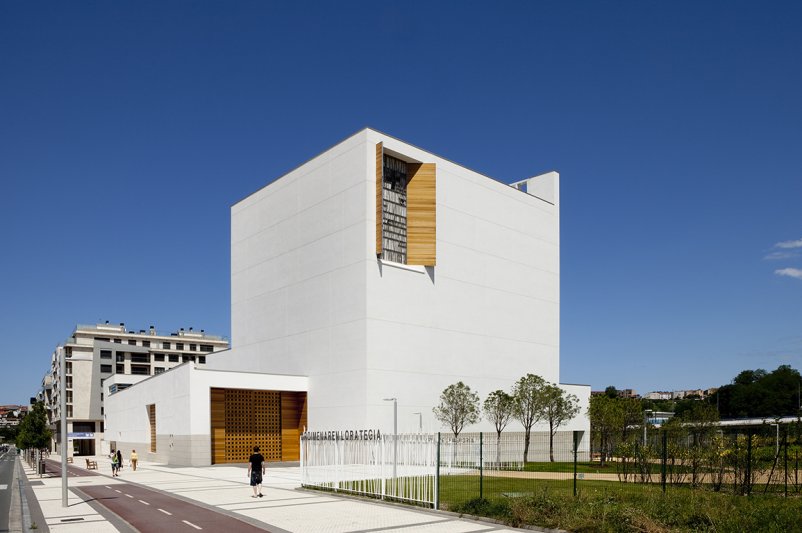
The new St. Trinitatis Church in the city of Leipzig (Germany) - the largest Catholic church in the former GDR - by German architectural firm Schulz und Schulz was awarded the third prize. The architects worked on the relationship with history and place, choosing a material such as porphyry, the same porous but very hard red stone from which the city's most significant monuments are built. Inspired by principles of energy sustainability, the church is equipped with a geothermal system, designed by scientists from the Technical University of Dresden.
Not only "archi-stars" then, and prizes to universally known big names in architecture, but also a commitment to highlighting the work of lesser-known professionals who are equally excellent in their work: alongside the first three winners, the Jury chose to give special recognition to two other works.
Special mentions go to to the St. John the Baptist Chapel, built from stone and wood in Berlin's Johannisthal district by the German architectural firm Brückner & Brückner, and the simple and austere Saint John Baptist Chapeldesigned, like a scalene triangle that fits perfectly into the landscape, by the Spanish architect Alejandro Beautell, in Tenerife, Canary Islands.
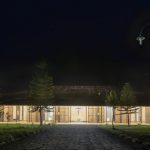
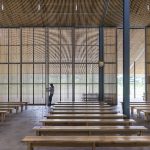

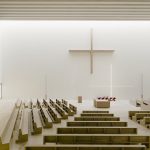
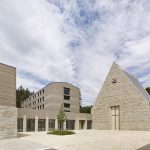
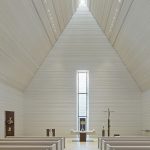
José Rafael Moneo Vallés, better known as Rafael Moneo, was born in 1937 in Tudela, Navarra, and studied in Madrid where he lives and works.
Director for many years of the most famous architecture school in the United States, the Harvard Graduate School of Design, he has taught architecture in Barcelona, Lausanne, New York, Princeton, Harvard and Madrid, and is the only Spanish architect to have won the Pritzker Prize.
Moneo has built distinctive and recognisable architecture with clarity and precision. His buildings possess that compactness that the architect declares as the key to a new modernity that represents the future of architecture.
His works dialogue with the identity of the place, amplify and interpret it.
This is the case with major interventions such as the Kursaal Concert Hall in San Sebastián or the remarkable extension of the Prado in Madrid, which reflects Moneo's attention to such a complex, fascinating and delicate historical context - managing to fit in with a completely different intervention - in total harmony.
And it happens with smaller but symbolic interventions, such as the Murcia Town Hall, and even when it comes to hotels, such as the Hyatt in Berlin, where the architect manages to carve out a space of identity in the debated context of Potsdamer Platz.
His most important works also include: the Museum of Roman Art in Mérida, the Atocha station in Madrid, the airport in Seville, the Museum of Modern Art in Stockholm, the Lady of Angels cathedral in Los Angeles, the Gregorio Marañón children's hospital in Madrid.
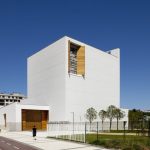
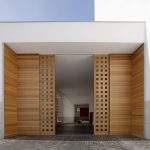
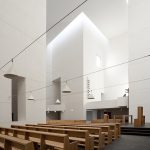
Balancing emotion and rigour, the Church of Iesu (inaugurated in 2011) is located in one of the most recent neighbourhoods of the Basque city, that of Riberas de Loiola, where the religious building, together with the adjacent Garden of Memory, constitutes a new landmark. The architecture, which Moneo himself defines as "generous in its spaces and very modest in its materials" is characterised (both externally and internally) by the abstract, minimalist white of the walls, an element that recalls the dominant colour of the flowers in the nearby park and above all the important rationalist constructions present in San Sebastián, such as the Real Club Nàutico and the "La Equitativa" building. The complex consists of three elements: the church proper, located inside a cubic volume and facing east; an 'L-shaped' body, housing several rooms including the parish centre; a wall enclosing the patio-garden located between the two buildings and filtering the transition from the open space of the street to the mystical space of the temple.
The nave of the church has a cruciform plan, carved out within a larger quadrilateral; in the spaces that complete the figure are, on the left, the sacristy and the baptistery, and, on the right, the Blessed Sacrament Chapel and the Reconciliation Chapel; the cruciform layout of the tradition is brought up to date by means of an asymmetrical design, which "reflects the tensions of today's world", according to the architect himself, and a reference to the Basque sculptor Eduardo Chillida and his Cross of Peace, housed in the Cathedral of San Sebastian.
A fundamental role is played by natural light which, entering the interior in different ways, manages to connote each space in a peculiar way; the zenithal illumination of the main nave stands out in particular, due to the openings in the roof which highlight its cruciform layout and immediately evoke the Gospel message and transport the faithful into a mystical dimension. Also noteworthy is the large stained glass window designed by Moneo himself and made of alabaster and glass inserts representing a cross, a sun and two moons in distinct phases.
The International Prize for Sacred Architecture is organised by the Frate Sole Foundation, and sponsored by local authorities and national ecclesiastical and cultural institutions such as the Pontifical Commission for Ecclesiastical Cultural Heritage of the Holy See, the Ministry for Cultural Heritage and Activities the National Council of Architects, the Order of Architects Planners and Landscape Architects of the Province of Pavia, the Diocese of Pavia, the Municipality of Pavia, the University of Pavia, the National Office for Worship Buildings, and the Lombardy Province of the Friars Minor.
